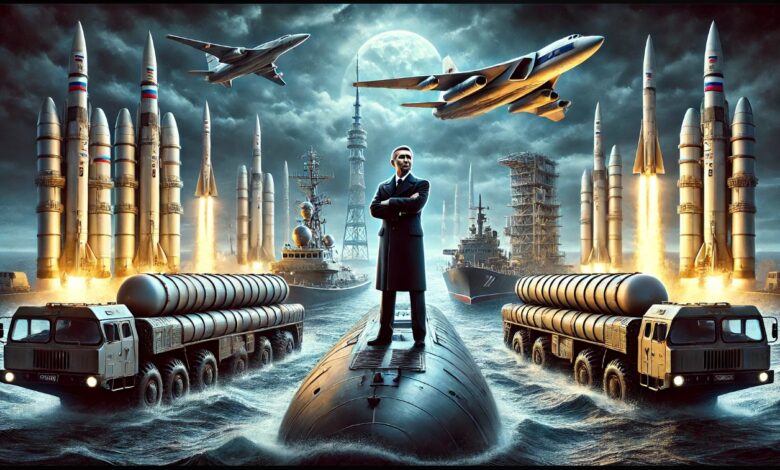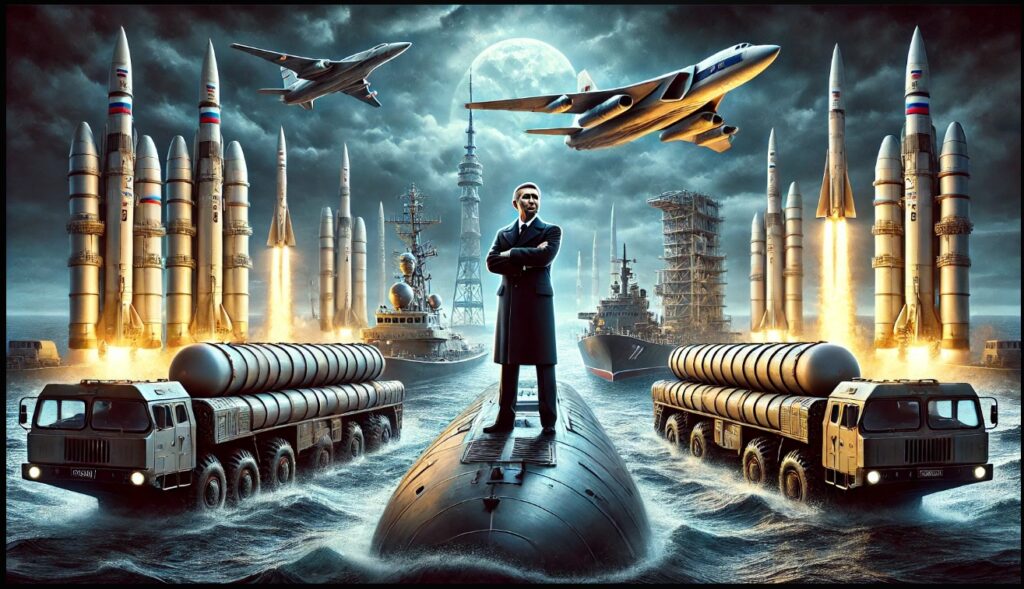Russia’s Nuclear Arsenal: Will Russia Deploy Nuclear Bombs on Ukraine?
Does Russia Use to Deploy Bombs on Ukraine

How Many Nuclear Bombs or Types of Bombs Does Russia Possess? What Types of Transportation Does Russia Use to Deploy Bombs on Ukraine?
Russia, as one of the world’s major nuclear powers, maintains a vast arsenal of bombs and delivery systems. While its nuclear capabilities are primarily designed to deter adversaries on a global scale, the conflict with Ukraine has raised questions about the types of bombs Russia possesses and the methods it could use to deploy them in the ongoing war.
Russia’s Nuclear Arsenal: Types and Quantities
Russia has the largest stockpile of nuclear weapons globally, with approximately 5,889 nuclear warheads. These are divided into two primary categories:
- Strategic Nuclear Weapons:
- Designed for long-range targets, these weapons include Intercontinental Ballistic Missiles (ICBMs) and Submarine-Launched Ballistic Missiles (SLBMs).
- Examples include:
- RS-28 Sarmat (Satan II): A new-generation ICBM capable of carrying multiple warheads.
- Bulava Missile: Launched from Borei-class submarines.
- Tactical Nuclear Weapons:
- Smaller in yield and intended for battlefield use or regional conflicts.
- Tactical weapons are often delivered by shorter-range missiles or aircraft.
- Examples include the Iskander missile system, which has been heavily used in the conflict with Ukraine.
Additionally, Russia possesses advanced non-nuclear bombs, including:
- Conventional Bombs: High-explosive bombs, thermobaric weapons, and cluster munitions.
- Hypersonic Weapons: Missiles such as the Kinzhal can deliver both nuclear and conventional warheads.

Delivery Systems for Bomb Deployment in Ukraine
Russia employs multiple transportation and delivery systems to deploy bombs in Ukraine. Although nuclear weapons have not been used in the conflict, Russia’s conventional strikes rely on advanced technology and a mix of traditional and modern systems.
- Air-Based Systems:
- Strategic bombers like the Tu-95, Tu-160, and Su-34 are used to deliver missiles and bombs, including air-launched cruise missiles such as the Kh-101.
- Fighter jets like the MiG-31K carry hypersonic missiles such as the Kinzhal, capable of striking high-value targets.
- Land-Based Systems:
- Iskander Missile Systems: Short-range ballistic missiles deployed near Ukraine can carry conventional or tactical nuclear warheads.
- Kalibr Cruise Missiles: Land-launched variants are often fired from mobile systems to target infrastructure deep inside Ukraine.
- Sea-Based Systems:
- Warships and Submarines: In the Black Sea, Russia has utilized vessels to launch Kalibr cruise missiles, striking Ukrainian ports and energy facilities.
- Drone Technology:
- Drones like the Shahed-136 (used in partnership with Iran) are employed for precision strikes, although they primarily carry conventional explosives.
Russia’s Use of Bombs in Ukraine
While Russia has not deployed nuclear weapons in Ukraine, its use of advanced conventional munitions has caused widespread destruction. The deployment of hypersonic missiles, thermobaric weapons, and cluster bombs highlights the intensity of the conflict and raises concerns about escalation.
The Nuclear Question: A Global Concern
The use of nuclear weapons in Ukraine remains a hypothetical scenario, but Russia’s doctrine allows for their use under certain conditions, such as a threat to its sovereignty. As tensions rise, the international community continues to watch closely, emphasizing diplomacy to prevent any catastrophic outcomes.
Russia’s Nuclear Arsenal and Deployment Methods
1. Nuclear Bombs and Types of Bombs:
- Nuclear Warheads: As of recent estimates, Russia possesses around 5,889 nuclear warheads, making it the country with the largest stockpile globally. This includes both strategic (long-range) and tactical (short-range) nuclear weapons.
- Strategic #Nuclear Weapons: Designed for long-range targets, such as intercontinental ballistic missiles (ICBMs) and submarine-launched ballistic missiles (SLBMs).
- Tactical Nuclear Weapons: Smaller yield weapons designed for use on the battlefield or for regional conflicts.
- Types of Bombs:
- Intercontinental Ballistic Missiles (ICBMs): Examples include the RS-28 Sarmat (Satan II).
- Submarine-Launched Ballistic Missiles (SLBMs): Examples include the Bulava missile.
- Air-Launched Cruise Missiles: Examples include the Kh-102.
- Hypersonic Weapons: Russia has developed weapons like the Avangard and Kinzhal, capable of delivering nuclear or conventional payloads.
- Gravity Bombs: Dropped from strategic bombers like the Tu-95 or Tu-160.
2. Transportation and Delivery Systems:
Russia uses a triad system for the delivery of nuclear weapons, ensuring flexibility and survivability:
- Land-Based Systems:
- ICBMs such as the RS-24 Yars are deployed in silos or on mobile launch platforms, allowing for strategic strikes.
- Sea-Based Systems:
- Ballistic missile submarines (SSBNs) like the Borei-class are equipped with SLBMs such as the RSM-56 Bulava.
- Air-Based Systems:
- Strategic bombers like the Tu-95MS, Tu-160, and Tu-22M3 carry cruise missiles and gravity bombs.
- Hypersonic Systems:
- Missiles like the Kinzhal can be launched from MiG-31 fighter jets.
- Specialized Systems:
- Unmanned systems like the Poseidon, an autonomous underwater drone capable of carrying a nuclear payload.
3. Other Deployment and Transportation Modes:
- Rail-Based ICBM Launchers: In development or used historically, rail-based launchers provide mobility and concealment.
- Missile Defense-Evading Technology: Russia focuses on hypersonic and stealth technology to avoid detection and interception.
Why Nuclear Use Is Unlikely
While Russia possesses the capability to use nuclear weapons, several factors make this scenario improbable:
- Global Retaliation: #NATO and allied countries have warned of severe consequences if nuclear weapons are used.
- Strategic Costs: Escalation to nuclear warfare would damage Russia’s standing and isolate it from even neutral or supportive nations.
- Ethical and Humanitarian Concerns: The catastrophic impact of nuclear weapons on civilians would result in global condemnation.
Conclusion
Russia’s #arsenal reflects its military dominance, encompassing thousands of nuclear warheads and a variety of conventional bombs. The delivery systems it employs—ranging from land-based missiles to strategic bombers—showcase its capability to project power far beyond its borders. While the conflict in #Ukraine has seen devastating strikes with conventional munitions, the specter of nuclear escalation remains a concern for the entire world.


